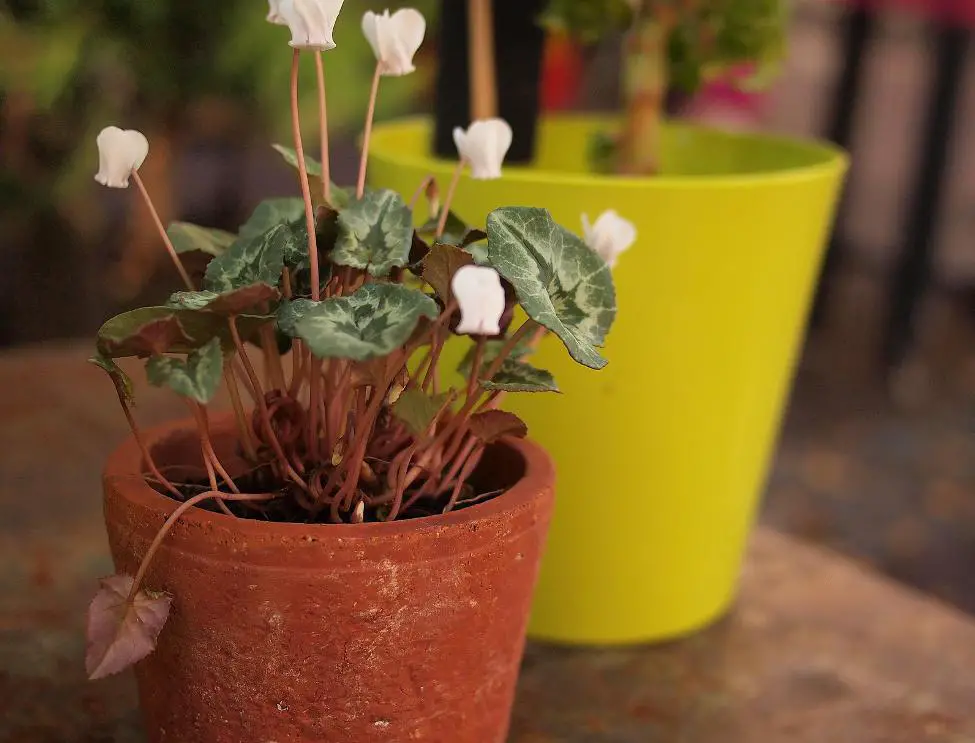There are so many different materials for outdoor planters nowadays that it makes it difficult to decide which one to choose.
In this article, we will talk about which are the best materials for outdoor planters.
Things to consider when choosing the right planter or plant pot
When choosing containers, you should do it carefully as the right ones can greatly improve the chances of having a successful container garden. The following are some of the things to consider when deciding which kind of pot to choose:
- How frequently do you water your plants? If you water them frequently, you could choose a porous material such as terracotta or cement that will dry out quickly. Otherwise, it will be best to get a less porous material such as plastic, glazed ceramic or fibreglass.
- Type of plant. Some plants require water to drain more quickly than others.
- Aesthetic. You might have a preference for how a material looks compared to others.
- Climate. Consider how warm/cold and dry/humid is the weather in your location.
9 Best materials for outdoor plant pots
Terracotta or Clay
Terracotta pots are traditional, stable and look good. Large ones are heavy, but you can add a three-wheeled trolley underneath which is good for easy moving or just rotating the plant sunwards.
The downside of terracotta pots is that they are porous and can dry out quickly. Painting the inside of the pot with a sealant can make them less porous, more durable and able to withstand cold temperatures.
Wood
Wood planters are light and strong, but need lining with plastic to stop them from rotting. They also have excellent drainage and are usually an affordable option.
The other advantage of these kinds of wooden plant pots is that they come in different shapes and sizes.
Plastic and Fibreglass
Plastic and fibreglass are practical container choices because they are light and don’t dry out as terracotta does. They are usually cheap and tough and because they are not as heavy as other materials, they can be moved if necessary.
Metal
Metal pots add a modern touch or a retro look depending on the type. They are tough, light (unless lead), and retain water well. Metal gets cold in winter and hot in summer and will eventually rust, so insulate and protect the insides with cardboard or bubble wrap before planting.
Ceramic
Ceramic pots look beautiful and there are many different shapes and styles to choose from. They are not as porous as other materials so they will retain water for longer.
Larger pots can get quite heavy once soil and water are added to them, which makes moving the pot quite difficult. Also, ceramic pots tend to be more expensive than others.
Coir
Coir pots or coco pots are lightweight planters made from coconut fibres and natural rubber latex which are 100% natural and biodegradable.
These pots provide nourishment to the plants as they are rich in nutrients like potassium, magnesium and zinc, among others.
The disadvantages of these kinds of pots are that they are usually more expensive than plastic and not as durable.
Cement or Concrete
Cement or concrete pots are very durable compared to other materials like ceramic or terracotta. These pots are porous, so they will dry out quickly, and they will provide insulation to the soil inside.
The downside of cement pots is that they may contain lime, which is not toxic but can alter the soil’s PH levels making it more alkaline. They are also heavy, especially once you added the soil and water to them, and can be more expensive than terracotta or plastic ones. Being heavy is not necessarily a bad thing for a planter, as this means they won’t fall during windy days.
Concrete pots are ideal for succulent plants, as these pots will drain out water quickly and tend to make the soil more alkaline which is perfect for these plants.
Recycled containers
The recycled and repurposed world offers unlimited innovation, pre-loved wooden drawers, cooking pots, laundry tubs, olive-oil tins, old boots, buckets and wooden crates will all work as containers. Take care when recycling to avoid materials that may contain toxins, such as treated wood or old painted surfaces. You can grow crops in just about anything as long as it is big enough and sturdy enough with adequate drainage holes. Drill some yourself if you need to.
The best material for an outdoor planter or plant pot is the one that is right for your plant and conditions. Different plants have different requirements and many factors such as climate, space, time and budget might all affect the decision of which planter we choose.
